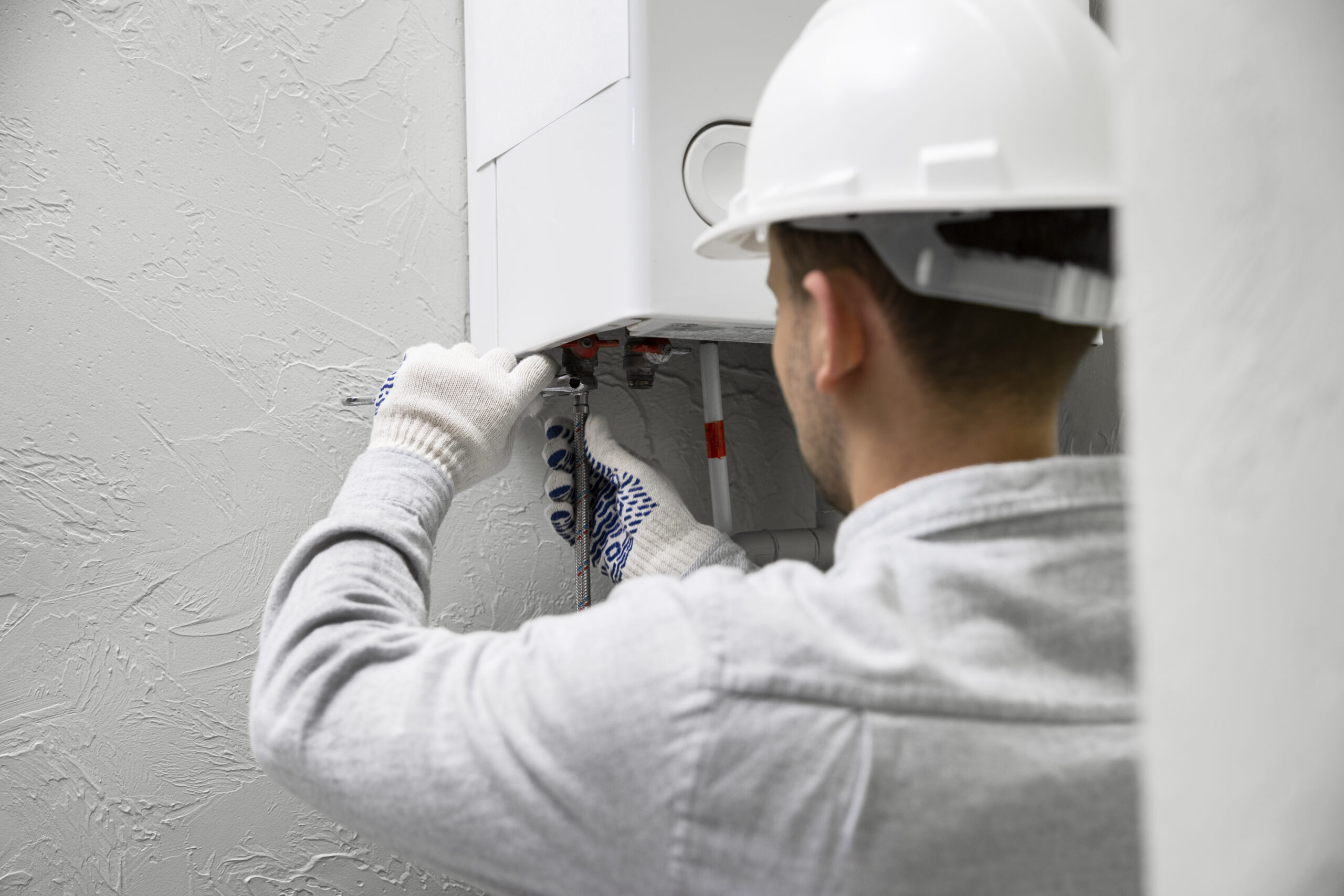Welcome to the world of electric water heaters, where the promise of a hot shower can turn cold without warning. Whether you’re a homeowner, business owner, or a DIY enthusiast, our expert tips will help you diagnose problems so you know when to call in the professionals for help.
Understanding Your Electric Water Heater
Electric water heaters are crucial in providing consistent hot water for your home or business. They function by using electrical energy to heat elements inside a tank filled with water, which in turn warms the water to a set temperature.
Key components of an electric water heater include the thermostat, which regulates the temperature of the water, and the heating elements, which are responsible for warming the water. Other vital parts are the tank that stores the heated water, the dip tube that allows cold water to enter the tank, and the pressure relief valve that ensures the tank pressure remains safe. Recognizing these elements will help in diagnosing issues and performing repairs.
Common Symptoms of a Failing Electric Water Heater
Electric water heaters can exhibit several tell-tale signs when they’re not operating correctly. If you notice your hot water supply is inconsistent, with fluctuations in temperature, it may indicate a malfunction within the heating elements or thermostat.
Another sign of trouble is unusual noises such as rumbling, popping, or whining from the tank. These sounds could suggest a build-up of sediment at the bottom of the tank, which can overwork the heating elements and reduce efficiency. Water pooling around the heater often signals a leak, which can be due to a range of issues from loose connections to a corroded tank. Regardless of the symptoms, it is essential to identify and address issues before they escalate.
Diagnosing Your Electric Water Heater Issues
Proper diagnosis is crucial in pinpointing the exact issues with your electric water heater. Start by inspecting the thermostat to ensure it is set correctly and functioning as intended. A malfunctioning thermostat can lead to inconsistent water temperatures.
Testing the heating elements for continuity with a multimeter can reveal if they are in working condition. These elements are responsible for heating the water in the tank, and if they fail, the water may not heat at all. Look for signs of corrosion or damage, which are typical indicators that a replacement is necessary.
Sediment buildup in the tank can also affect your water heater’s performance by insulating the heating elements and causing them to overwork or fail. Additionally, inspect all electrical connections for signs of looseness or corrosion, as poor connections can compromise the safety and function of the water heater.
When to Call a Professional: Tap 2 Drain Plumbing
While many issues with an electric water heater may seem simple enough to rectify, there are potential hazards involved. Tap 2 Drain’s team of professionals has the training and experience in handling electrical systems safely, which is especially valuable when repairing or replacing heating elements. This ensures that the work is done safely and to code, avoiding any risks of further damage or injury.
If you’re still having problems with your electric water heater – continuing fluctuations in water temperature, leaks that reoccur, or circuit breakers that won’t stay reset – it’s likely there are more serious issues that need attention. It may also be time to consider upgrading to a more energy-efficient model or a different water heating system.

